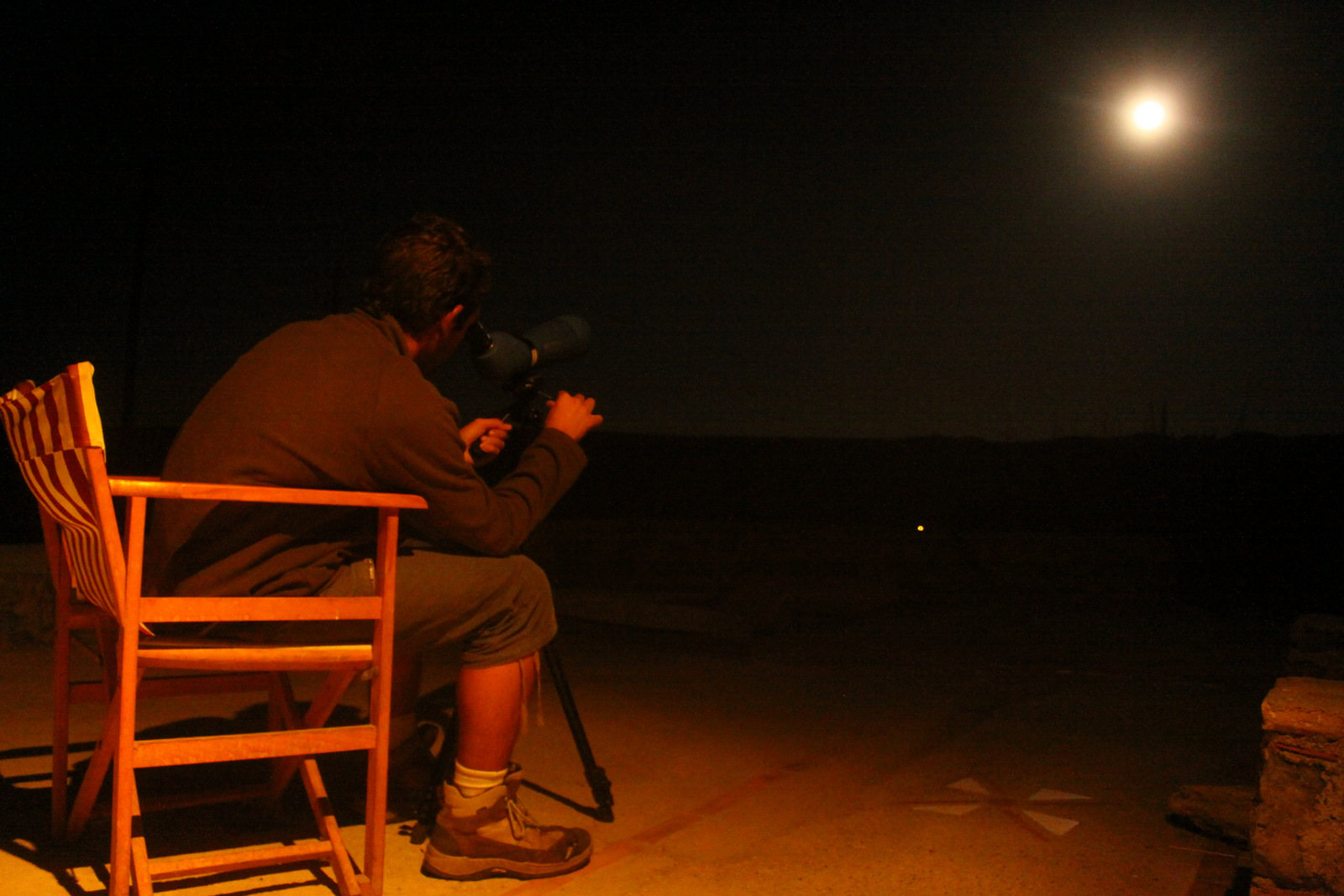Visitors and volunteers had the chance to enjoy the migration of birds at night by moon watching at the Antikythira Bird Observatory (A.B.O.) during the full moon of April and May, the latter being on Saturday 25th May.
Moon-watch is a fairly widespread/common method in central Europe and North America, in the context of which long-term projects of monitoring night-migrating birds are implemented, while it is now becoming more and more widespread in central and western Mediterranean.
As for Greece, during the full moon of spring in April and May 2012 and 2013 a respective (pilot) action of monitoring bird migration at night by the method of moon-watch was implemented at Antikythira. After the evaluation of the first results there seems to be the perspective of extending the observation points around the country, as this method is fairly simple and does not require specific ornithological knowledge, thus can be used by almost anybody equipped with patience and zest.

Every spring, billions of birds return to Eurasia from their wintering grounds in Africa in order to reproduce. Their systematic movement between continents, over deserts, mountains and seas is one of the most fascinating natural processes. Hundreds of thousands of amateur birdwatchers and professional ornithologists observe this phenomenon every spring and autumn around the world. Contrary to the vast majority of the birds of prey and the big birds, such as storks and herons that migrate at day and can be visible, most small birds migrate at night without being visible by most birdwatchers. Since most birds migrate at night, up until the- mid 20th century, there was no full picture of the intensity of the migration as phenomenon.
However, by observing the surface of the moon using a telescope it is possible to discern the silhouettes of migrating birds, as well as the direction of their flight. The part of the visible sky through a telescope focusing on the full moon is extremely small, and, consequently, only a very small percentage of migrating birds can be seen. Of course, nowadays, theoretical background is so developed that, if someone notes down the number and direction of the birds he observes, he can make relatively accurate reductions and estimate both the intensity and the direction of the bird migration.
This action is coordinated by the A.B.O., an independent project of the Hellenic Ornithological Society and is a unique Observatory of its kind in Greece whose main focus is on the study, monitoring and protection of migrating birds.
For further information and photographs: Media & Communications Officer, Katerina Giosma tel./fax: (+30) 210 8228704 line 107



